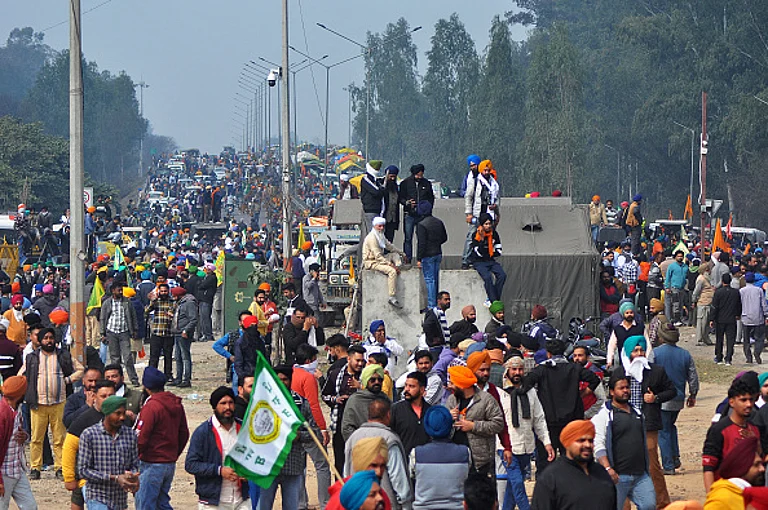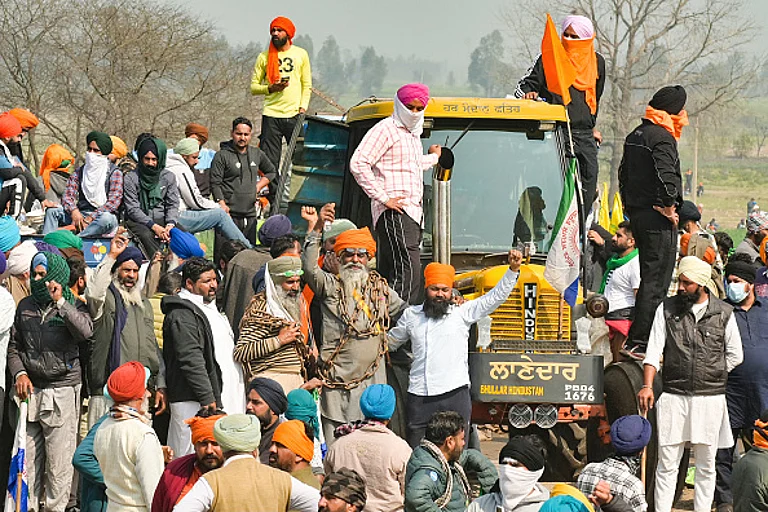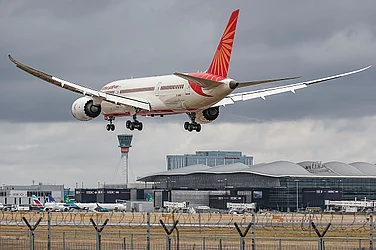Protesting farmers, who are braving the onslaught of pellet guns, tear gas and water cannons at the Shambhu and the Khanauri points on Punjab's border with Haryana, have been demanding a legal guarantee for MSP for all crops for all farmers – one of the key recommendations made by the 2006 M.S. Swaminathan Commission.
When the Modi government came to power in 2014, they promised that this legal guarantee along with the formula for the way MSP is set will change as proposed by the commission – a promise that hasn’t seen light to this day.
In the fourth round of talks with farmer leaders, a panel of three Union ministers on Sunday proposed buying of pulses, maize and cotton crops by government agencies at minimum support prices (MSP) for five years after entering into an agreement with farmers.
However, Samyukta Kisan Morcha, which spearheaded the 2020-21 farmers' protests, rejected the government proposal, saying it seeks to "divert and dilute" the farmers' demand for MSP and they will accept nothing less than the 'C-2 plus 50 per cent' formula for MSP as recommended in the Swaminathan Commission report.
What is the 'C-2 plus 50 per cent' formula for MSP?
The National Commission on Farmers, headed by Dr. M. S. Swaminathan, recommended in 2006 that MSP should be at least 50 per cent more than the weighted average cost of production. (In the report, the “weighted average cost of production” referred to was the C2 cost.)
The cost of production is calculated by the Commission for Agricultural Costs and Prices (CACP) – a government-appointed expert body that recommends MSP for agricultural products – based on three types of costs: A2, A2+FL, and C2.
A2: direct expenses incurred by the farmers, such as seeds, fertilizers, pesticides, labour, etc.
A2+FL: the value of the unpaid family labour to A2.
C2: A comprehensive cost which includes A2+FL cost plus imputed rental value of owned land plus interest on fixed capital, rent paid for leased-in land
The Swaminathan Commission therefore recommended fixing the MSP at least 50 per cent more than the C2 cost of production. So the final formula for calculating the MSP was: C2+ 50 per cent (of C2). The farmers too have been demanding that the MSP be fixed at 1.5 times of C2.
What is the current formula for calculating MSP?
It was in 2018, when the then Finance Minister Arun Jaitley announced that his “government has decided to keep MSP for all unannounced crops of kharif at least at one and half times of their production cost”. However, the speech did not elaborate on what constituted this ‘production cost’ – whether it was C2 or only A2+FL.
Later on, Jaitley clarified in the Parliament on February 9, 2018, that the production cost he referred to was A2+FL. Even a report by the CACP titled ‘Price Policy for Kharif Crops: The Marketing Season 2018-19’, stated that its MSP recommendation was based on 1.5 times the A2+FL costs.
Farmers and activists argue that if MSP was calculated by C2+50 per cent formula, products would be priced around 25-30 per cent higher. For example, as reported by Down to Earth, the difference between the declared MSP for six Rabi crops (2024-25 marketing season) and the one that the farmers have been demanding ranges between Rs 203 per quintal and Rs 1,380 per quintal, depending on the crop.




























